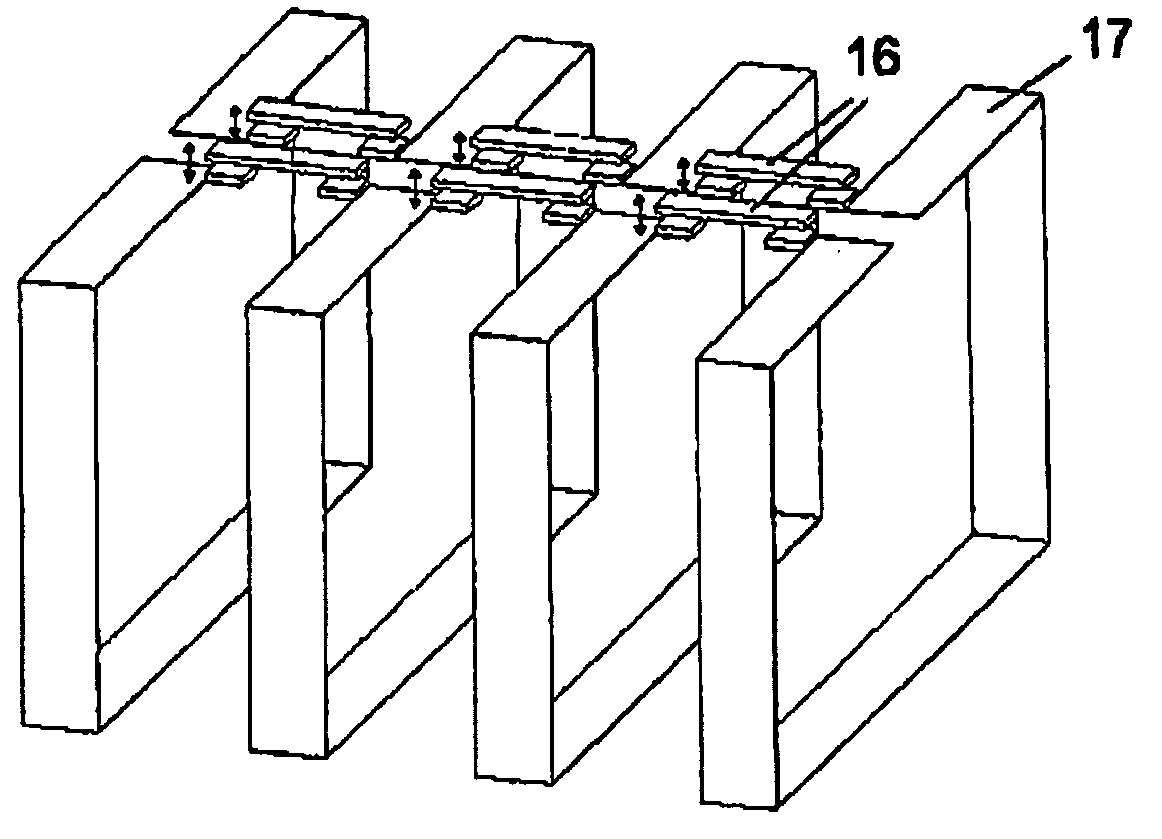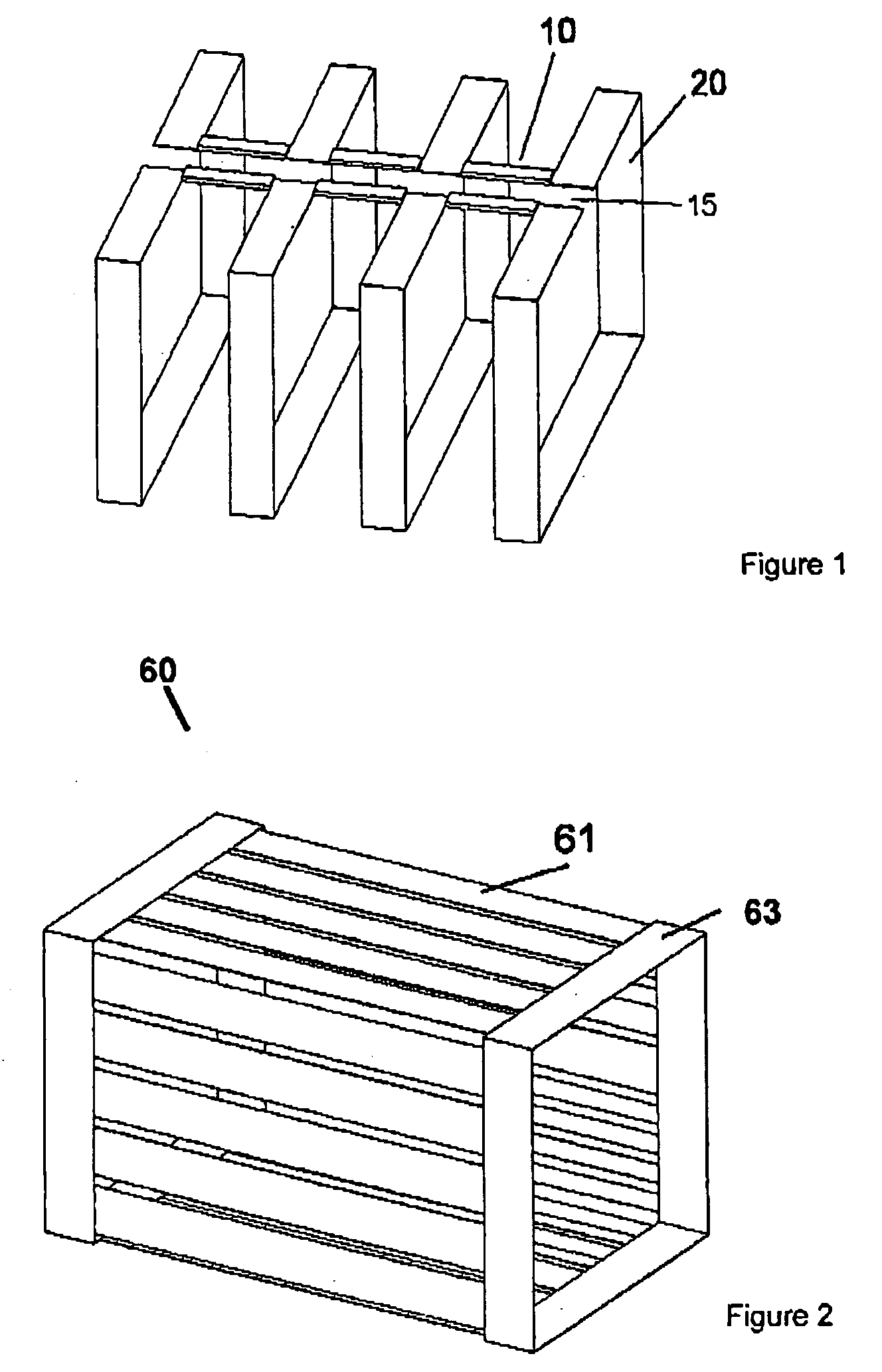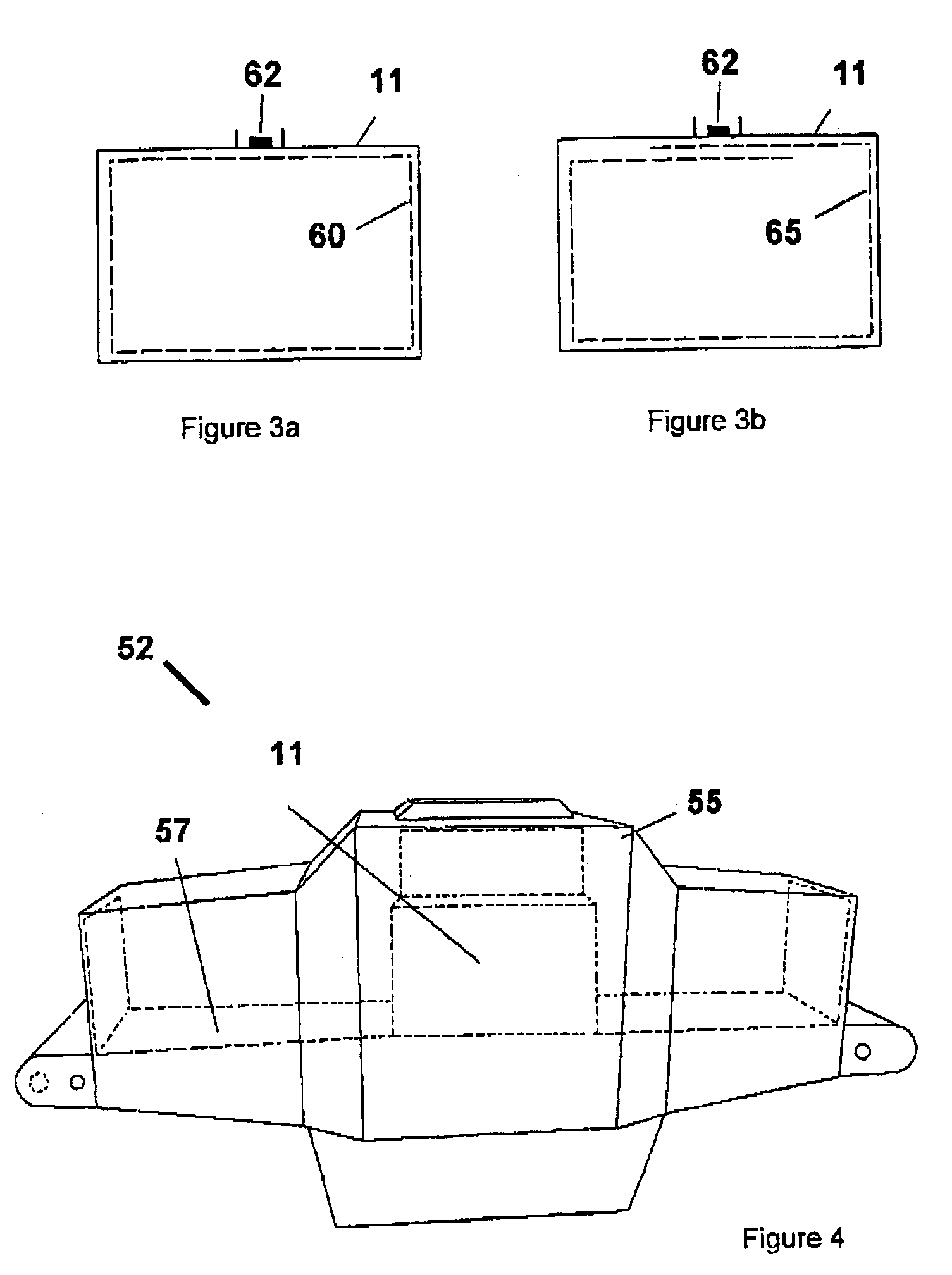Transmit-receive coil system for nuclear quadrupole resonance signal detection in substances and components thereof
a technology of quadrupole resonance signal and transmit-receive coil, which is applied in the direction of antennas, geological measurements, reradiation, etc., can solve the problems of low q factor design, waste power irradiation into a non-usable volume, and the signal voltage measured from an nqr sample is typically very small, so as to prevent coupling
- Summary
- Abstract
- Description
- Claims
- Application Information
AI Technical Summary
Benefits of technology
Problems solved by technology
Method used
Image
Examples
first embodiment
[0096] The first embodiment is directed towards an antenna and shield apparatus comprising a coil assembly 11 of the type shown in FIG. 1, an electric field shield 60 of the type shown in FIGS. 2 and 3a, and an outer shield 52 of the type shown in FIGS. 4 and 5.
[0097] The coil assembly 11, as shown in FIG. 1, comprises a plurality of loop segments 20 made out of flat sheet electrical conducting material. The loop segments 20 are axially spaced in parallel alignment with each other about a central axis to constitute a first set of coils. Each of the loop segments 20 is interconnected along its top by a series of connectors in the form of bars 10 made from an electrically conducting material.
[0098] The loop segments 20 are configured in a rectangular shape in cross-section circumscribing a target volume within which a specimen may be disposed for scanning.
[0099] The opposing ends of each loop segment 20 at the top of the coil assembly 11 are spaced from each other to define a gap 15...
ninth embodiment
[0143] The ninth embodiment is similar to the preceding embodiment in achieving the same effect of field homogeneity by varying the separation or gap between each loop segment. As shown in FIG. 16, the loop segments 20a in the centre of the coil have large gaps between them and loop segments 20b near the ends have very narrow gaps between them.
[0144] To illustrate the improvement in field homogeneity a multiple parallel loop coil was modelled in an electromagnetic field simulator using the finite element method. The coil consisted of three basic cylindrical segments connected together. The two outer segments were 50 mm long and the centrally located inner segment was 30 mm long, with a 235 mm gap between the outer and inner segments, making a total coil length of 600 mm. FIG. 17 shows the simulated B field down the central axis of this cylindrical shape and an ordinary single turn coil. As it can be seen in FIG. 17 the field from this coil (dashed line) is almost homogeneous across ...
PUM
 Login to View More
Login to View More Abstract
Description
Claims
Application Information
 Login to View More
Login to View More - R&D
- Intellectual Property
- Life Sciences
- Materials
- Tech Scout
- Unparalleled Data Quality
- Higher Quality Content
- 60% Fewer Hallucinations
Browse by: Latest US Patents, China's latest patents, Technical Efficacy Thesaurus, Application Domain, Technology Topic, Popular Technical Reports.
© 2025 PatSnap. All rights reserved.Legal|Privacy policy|Modern Slavery Act Transparency Statement|Sitemap|About US| Contact US: help@patsnap.com



